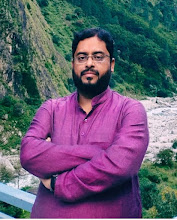Mayfair Hotels & Resorts, which operates the Mayfair chain of luxury hotels in various parts of the country, will open its latest resort at Gopalpur-on-Sea for commercial operations from December 9. The sprawling resort- Mayfair Palm Beach Resort, the eighth property of Odisha-based Mayfair Group, is equipped with all facilities of a luxury hotel, spread over eleven acres of land. The Mayfair Group acquired this heritage property from the Oberoi Group in September 2011 and decided to renovate it, said Mayfair Group chairman and managing director Dilip Ray. The resort, at present, has 32 rooms. In addition to the existing facilities, Mayfair Group plans to add a tennis court and golf course to the resort. Besides Gopalpur, the tourists can also visit some other places in Ganjam district like the habitats of the blackbuck and peacock near Aska and the mass nesting of Olive Ridley turtles at Gokharakuda near Rushikulya river mouth, Ray said.
History & Background
Before 1830, an Englishman by the name of John Spence had established the Spence's hotel in Calcutta, making it perhaps the oldest western style hotel outside Europe and in 1841 David Wilson built the 'Wilson Hotel' now known as 'Great Eastern Hotel', also, in Calcutta, which was considered to be one of the best of it's kind, in this part of the world. No one had really by then heard of Gopalpur. And Gopalpur returned the compliment. Barely 16 kms from Berhampur, the commercial hub of Southern Orissa, in the Bay of Bengal, it was extremely uncanny of a young Italian Signor Maglioni, to mysteriously find home all the way from Sicily , and establish the 'Palm Beach' in 1914. It was Odisha's first hotel, of its kind.
Gopalpur on sea how very British suffix on sea like Midleton- on- sea /Frankton-on- sea was a palm fringed beach and Maglioni's dream fused with the sepia and romance of the langorous town ,where the silence was broken only by the breakers and the occasional coconut thudding on the ground.
Originally a small fishing village on the coast of Odisha when it was so named, when a temple dedicated to Lord Krishna 'Krishna Gopal' temple was built in the 18th Century. Legend has it that Gopalpur's sands had witnessed maritime ventures of a much earlier age when Odisha had flourished as part of the Kalinga Kingdom in the 4th and 5th century B.C early colonists to Java, Bali and Sumatra were supposed to have sailed from here, carrying the seeds of Indian civilization with them.
Between the two World Wars ( 1914-1918 and 1939-1945) Gopalpur was overrun by the men in Khakis and became the eastern sectors base for flying out troops and supplies to Rangoon. The commercial port became the living symbol of its grandeur and the pulsating lifestyle was evident in the packed dance floors of the hotel 'Blue Haven'. In 1945. The World War2 came to an end and India inched towards being an independent, sovereign republic. By 1947the British had left the Indian shores and the commercial activity of Gopalpur had dwindled to a trickle. The once vibrant, emblazoned ball rooms gaped at open skies. The noisy wharfs moulted and the warehouses became seedy gateways for derelicts. Gopalpur's importance dwindled when trade with Burma abruptly ceased during the war. When the British left India, even members of rich Bengali homes preferred to holiday in other places and Gopalpur began to revert to what it originally was a fishing village.
In 1938,another enterprising, courageous Indian Hotelier, Rai bahadur M.S Oberoi had already taken over a closed down 'Grand' hotel from the Armenian Stephen Arathoon and reinvented it with trademark Oberoi elan' as the 'Oberoi Grand', to make it the most sought after address in Calcutta. In 1947, on a chance visit to Maglioni's 'Palm Beach' hotel his keen eyes did not miss the state of disrepair that the hotel had fallen to. His instinct smelled a bargain and Maglioni was only too happy to sell it to the Oberoi's for a paltry 3.0 lacs rupees.,thereby enabling the Oberoi legend to root itself as the 'Oberoi Palm Beach'.As it's doors opened the who's who of the country , from Prime ministers, to celebrities and royalty left their impressions behind along with their footprints on the sands of time. History was being created every day, as the hotel played hosts to the history makers.
Maglioni's Mediterranean Architecture had undergone a makeover by the Oberoi's ,but the core of the structure was slowly but surely giving way to the Gopalpur on Seacorroding effects of the saline sea breeze. The erosion had begun and no amount of hasty repairs could make it anymore safe for it's guests. The Oberois closed gates in 2002 and decided to distance themselves and sell this piece of Orissa's history to any worthy taker . It was at this time, 201 1, that 'Mayfair hotels and resorts' stepped in. T o protect, renovate and restore the' Palm beach',where history echoed from every cobble stone. Lured by the fact that Gopalpur-on-sea still stood untouched by the concrete commercialism that had destroyed nearby Puri's equally pristine beach and also because Gopalpur had actually wrapped itself in a romantic mysticism that tugged at history but refused to drown in its excesses.
Rebuilding the core structure from scratch, lovingly touching up the details, reinventing the old magic, preserving the memories, Mayfair has now breathed new life to the 'Oberoi palm Beach' in its all new avatar- 'The Mayfair palm Beach resort' Its the ultimate tribute to your senses and helps in stealing your time and mind in order to find your DNA and recreate you for future generations... where always, every time, anyday 'sometimes the sky looks like the sea and sometimes the sea looks like the sky'.
Source: Business Standard & www.mayfairhotels.com


